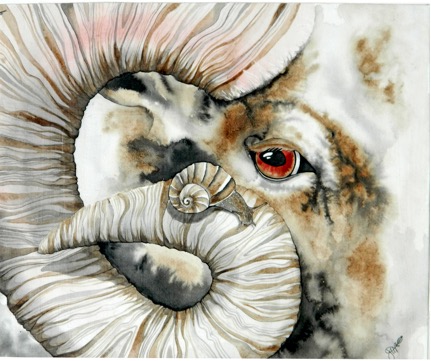Jennifer “Juniper” Harrower is a third-year graduate student in the Environmental Studies Doctoral Program at UC Santa Cruz. Her research examines human influence on biodiversity in protected areas. Recently, she shared her research interests and described her path to graduate school with the Division of Graduate Studies.
Harrower’s work focuses on the Joshua tree, “and their symbionts, using both laboratory and field methods.” This research comes at a crucial point in time, with predictions of the elimination of the Joshua tree from its current range based on the effects of climate change in the Southwest. “Joshua trees will be greatly affected by the changing climate, and models predict they could be mostly extinct from Joshua Tree National Park within 100 years,” she said.
Harrower examines the relationship between the Joshua tree and the yucca moth, the trees’ “only pollinator, who’s growing larva consumes a portion of the trees developing seeds,” she said. “This balance between pollination and seed predation could become disturbed under rapid climate change.”
Her interest with the Joshua tree developed from a young age. “I grew up 30 minutes outside of Joshua Tree National Park, so I have had a long standing connection to the desert, and was initially interested in natural history and ethnobotany.”
Studying plant biology and genetics as an undergraduate at UC Berkeley, followed by field research in Costa Rica through the Education Abroad Program, led Harrower to her current research enquiries about symbiosis. “I realized that ecosystem processes and interactions were so much more interesting then just memorizing species names and descriptions,” she said. “You get a deep understanding of why things exist where they are, and how they have evolved into their current form, and how interconnected life is.”
That interconnection has brought her to another symbiotic relationship within the Joshua tree’s realm. “I have recently discovered that Joshua trees form symbiotic interactions with root fungi that could help them to tolerate prolonged drought conditions, and increase their chances for future seedling establishment and survival,” she said. “Understanding the ecological interactions between trees and their symbionts could be important for natural resource managers.”
Harrower’s faculty adviser, Professor Gregory Gilbert, researches fungal and plant ecosystems. The good fit between her research interests and the work being done by her adviser was one part of why she chose to come to UC Santa Cruz. “I was really interested in an interdisciplinary program, and I was able to pursue these different topics within the Environmental Studies PhD program.” As a graduate student, she particularly appreciates the “support, training, and community I have at UCSC – particularly in the ENVS department.”
Her path to graduate school had an auspicious start, as a research assistant in a lab as an undergraduate. “Seeing students pipette at a lab bench 6 days a week definitely turned me away from science for awhile,” she said. “I looked for a different way to affect change and began a teaching credential and masters of education program while working full time as a science teacher in Oakland.” Her move to South America to work in tropical field research led her back to higher education; “[it] really sparked my interest to reconsider a research program in graduate school. There are many ways to be a graduate student.”
Her work as an artist also brings her scientific background into practice. “I paint images of biological juxtapositions with organic materials. I have always been interested in how visual imagery can connect with people at an emotional-belief level, to inspire or change unsustainable practices, and promote learning.”
“Big Horned” painting by Juniper Harrower painted entirely of black mushroom ink and pinot noir red wine.
As a graduate student at UC Santa Cruz, she has worked with the art and science research group OpenLab. She has collaborated with the group on projects such as “Seeking Symbiosis.”
“We expose art students to environmental studies research through lectures and visits to the UCSC research greenhouses,” she said. “Using this information, the students create art pieces that engage with the scientific and cultural discourses surrounding global change, and have displayed them in both departments and for sustainability events on campus.”
Harrower plans to utilize her graduate education to continue her career of educating others with science and art. “I hope to keep doing cross-disciplinary meaningful work that I am challenged by, and to help empower people to make healthy decisions for ourselves and our environment.”


